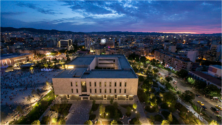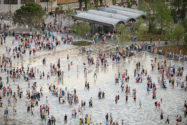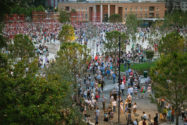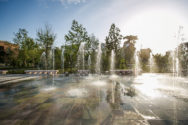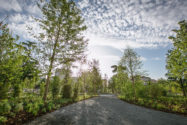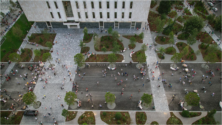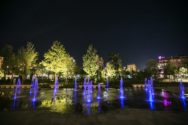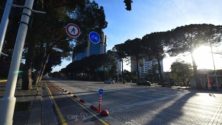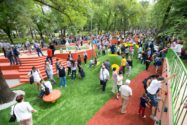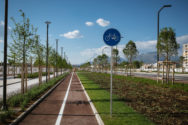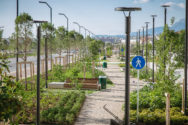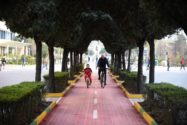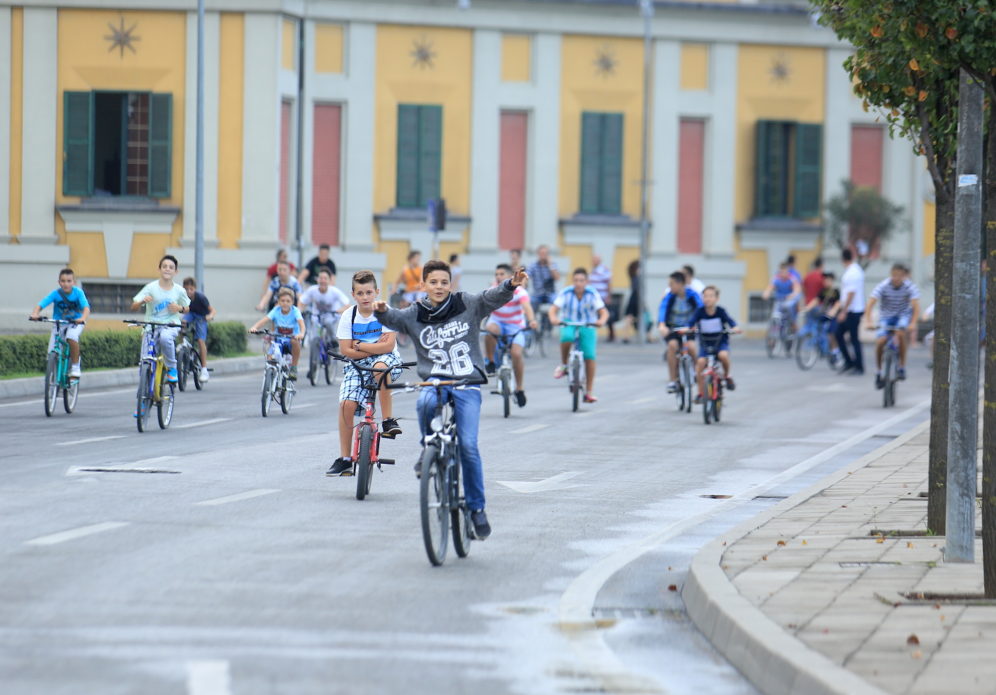
September 08, 2020
Interview with MOBILIZE Keynote, Mayor Veliaj of Tirana, Albania
Erion Veliaj has been Mayor of Tirana, Albania, since 2015. He has overseen the transformation of the Skanderbeg Square from a massive roundabout of only cars into a welcoming and safe pedestrian space. Tirana is the capital and largest city of Albania, a country in Southeast Europe along the Adriatic and Ionain Seas of the Mediterranean and across from the Italian peninsula. Albania is a membership candidate for the European Union and borders Montenegro, Kosovo, North Macedonia, and Greece. Tirana has a population of just under 1 million and Albania has a population of just under 3 million people.
 Mayor Veliaj will provide the keynote address at MOBILIZE Summit 2020. ITDP conducted an interview with him this month to discuss some of his administration’s achievements and upcoming plans.
Mayor Veliaj will provide the keynote address at MOBILIZE Summit 2020. ITDP conducted an interview with him this month to discuss some of his administration’s achievements and upcoming plans.
How did you first become interested in the sustainable urban transport field?
Before joining politics, I was the leader and founder of a civic organization that gained immense popularity–especially among Albanian youth–for its novel and peaceful protest methods. Our goal was to raise awareness of important issues that hindered the quality of life for our citizens. Without a doubt, one of the essential topics we dealt with was urban transport, recognizing its critical importance in the context of sustainable development due to the stress it places on the environment and people’s welfare. After becoming Tirana’s mayor, my preoccupation with sustainable urban transport matters has been translated into concrete actions and has become a responsibility that never gets lost amid the flurry of other immediate priorities in our city.
Your administration has achieved some great progress toward sustainable development and fighting climate change, including pedestrianizing Skanderbeg Square, for which you won the 2018 European Prize for Urban Public Space. You’ve mentioned that the biggest challenge for this project was ‘conjuring political will’. What kinds of resistance did you encounter?
Indeed, we transformed Skanderbeg Square into an exclusively pedestrian square. What used to be 40,000 m2 roundabout, dedicated to cars, is currently Tirana’s biggest public square, where children and everyday citizens enjoy a car-free day in much cleaner air. Transforming a city into a resilient and sustainable habitat requires difficult tradeoffs for daily commuters that predominantly use cars as a means of transport. Finding a consensus and shifting this mentality is no easy task; it demands political will, courage, and strenuous effort, to change from the status quo. In our case, with Skanderbeg Square, political resistance, rallies, and protests were inevitable. However, all these didn’t restrain our determination to move forward with the project, which in the end, proved we were the ones on the right side.
What do you think was the most effective argument or method you used to counter it? What sort of outreach strategies did you use? Who were some of your biggest advocates?
Perhaps the most important lesson we have learned as we have implemented green projects in our city is the need to identify the right supporters in our community and the right partners, both local and international, that advocate for green mobility. Youngsters and children became our best allies and advocates of change and mobilization. They showed up first on our “days without cars” initiatives and every new playground inauguration. So, for the Skanderbeg Square project, we targeted their parents and families on the need to provide them with one of the biggest playgrounds in the city center where they can enjoy a car-free day at any time, safely and in much cleaner air. This strategy worked so well that we used it to push forward other green projects like constructing a minimum grid for dedicated bike lanes and extending sidewalks to encourage more walking and cycling.
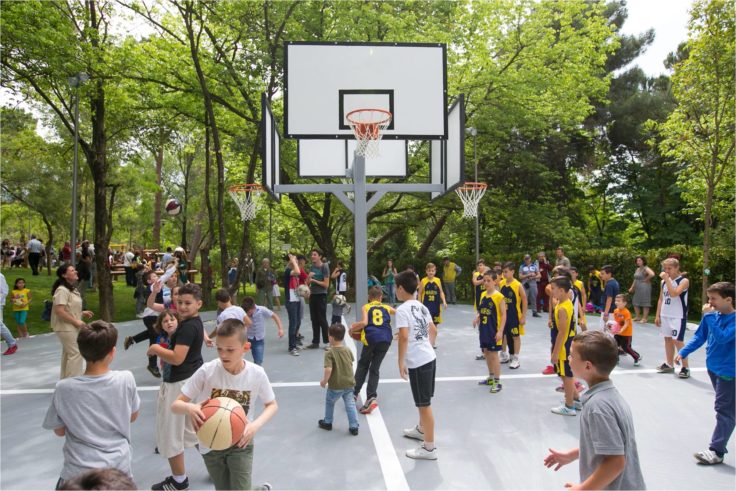
Has the success of the Skanderbeg Square helped with other pedestrian focused projects? Have people’s minds been changed?
The restoration of Skanderbeg Square has been an excellent opportunity for taking space away from cars and inviting people, mostly children and young people, to appropriate the space as theirs. Now the square has a wide range of uses from the community, including morning strolls, fair or carnival markets for local farmers to evening concerts, and art shows. It has become an oasis in the center of a congested city for the citizens of Tirana. Moreover, it has contributed to unleashing a new attitude for our citizens towards urban ecology and preserving the environment and sustainable mobility. In other words, it has been an introduction to urban ecology that has shaped the perception of people towards public space, mobility, and the natural environment. This extraordinary outcome encouraged Tirana’s Municipality to work on other layers for tackling mobility issues in our city. We established a 35 kilometers bike grid to enable safe cycling, widened existing sidewalks, and transformed illegal occupied public spaces into mini squares and playgrounds. We also switched from free available parking space to paid ones to demotivate the use of cars.
In our current situation, what do you think is the value of summits like MOBILIZE?
Through international seminars, conferences, or summits like MOBILIZE that promote and encourage green and sustainable mobility initiatives, as mayors, we have the opportunity to share know-how and strategies to confront challenges regarding the implementation of green projects. Such events help us identify suitable projects that we can replicate in our cities and make them work.
Another major project, which is ongoing, is the Orbital Forest, a two-million tree ring around the city that would both mitigate climate change and encourage density. What other types of improvements or changes do you anticipate from the forest?
Along with architect Stefano Boeri, our administration developed “Tirana 2030” – a comprehensive Master Plan for the city with a symbolic focus on natural monuments and environmentally friendly infrastructure. One of the most prestigious projects of this plan is the Orbital Forest. It envisions planting 2 million trees that will embellish urban Tirana in a ring of parks, forests, and agricultural land to limiting sprawl, expand green lungs, and diversify the possibilities for recreation. Such an initiative requires deep pockets, a financial comfort that not many cities have, including Tirana. Therefore, we had to develop a very creative solution and economically feasible in the long term for the Municipality. We started planting trees with well-known public figures and other celebrities to celebrate an event or a big day, therefore attaching a social value or “cool” effect on the process of planting trees in Tirana. This process became viral and spread on social media among adults, teens, and children, who wanted to plant their trees. The Orbital Forest stimulated a unique and rare collective action towards Tirana’s forestation and contribution to protecting the environment.

What sorts of challenges has the global pandemic brought to your plans for Tirana? Have there been any silver linings and opportunities as a result?
COVID-19 has changed many aspects of life, including our understanding of mobility and public transport. Cities experienced an unusual moment that turned car-free streets into ordinary reality. Citizens started to understand that in a town with no heavy industries, the most prominent pollutants and the real enemies are cars. Our projects on sustainable mobility received more community support than ever before. We used this golden opportunity to speed up projects like pop-up bike lanes and wider sidewalks to beat cars’ dominance in favor of pedestrians and cyclists. We extended our current bike grid from 35km to 45km cost-effectively and rapidly. It was an excellent opportunity to contribute to our environment and improve our citizens’ health and well-being. On the other hand, their response was fantastic and embracing; bikes sales surged, turning our streets busy with two-wheelers.


